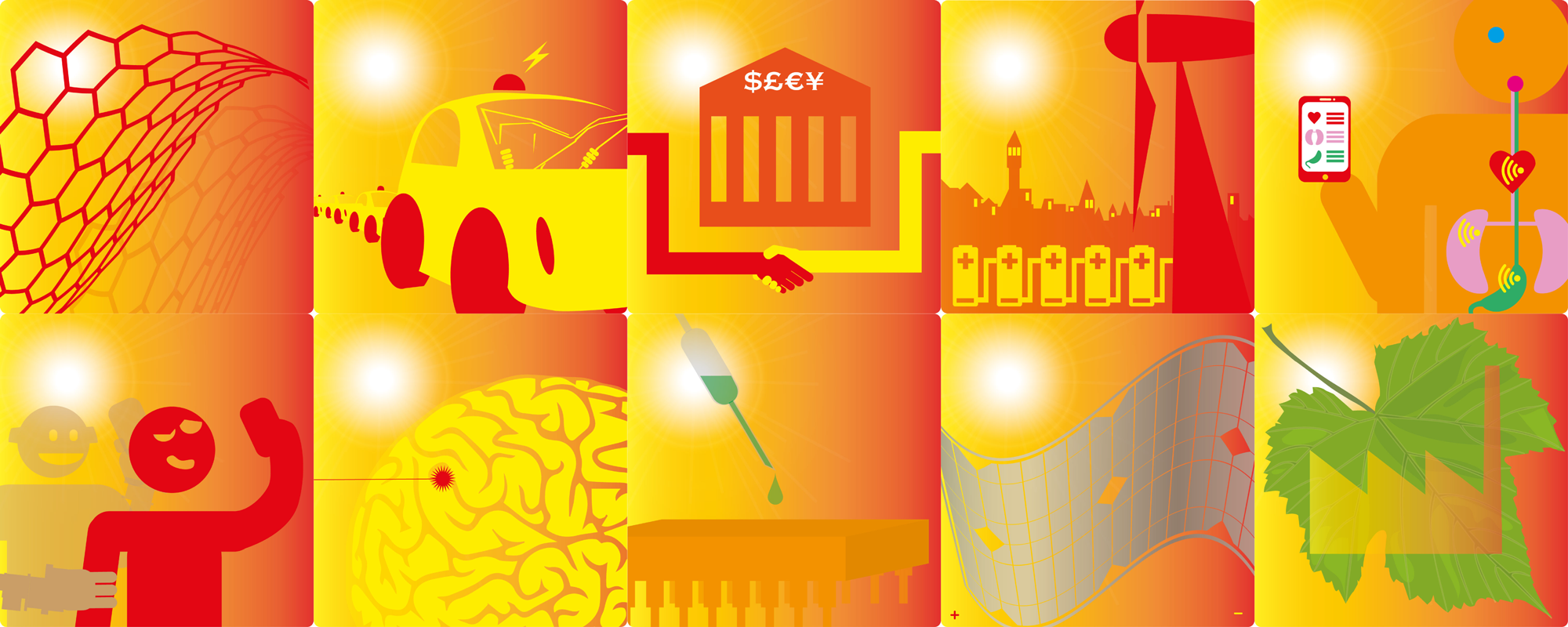Graphene considered within the top 10 emerging technologies
Meta-Council on Emerging Technologies

New technology is arriving faster than ever and holds the promise of solving many of the world’s most pressing challenges, such as food and water security, energy sustainability and personalized medicine. In the past year alone, 3D printing has been used for medical purposes; lighter, cheaper and flexible electronics made from organic materials have found practical applications; and drugs that use nanotechnology and can be delivered at the molecular level have been developed in medical labs.
However, uninformed public opinion, outdated government and intergovernmental regulations, and inadequate existing funding models for research and development are the greatest challenges in effectively moving new technologies from the research lab to people’s lives. At the same time, it has been observed that most of the global challenges of the 21st century are a direct consequence of the most important technological innovations of the 20st century.
Understanding the implications of new technologies are crucial both for the timely use of new and powerful tools and for their safe integration in our everyday lives. The objective of the Meta-council on Emerging Technologies is to create a structure that will be key in advising decision-makers, regulators, business leaders and the public globally on what to look forward to (and out for) when it comes to breakthrough developments in robotics, artificial intelligence, smart devices, neuroscience, nanotechnology and biotechnology.
Latest report: Emerging Technologies 2016

1. Nanosensors and the Internet of Nanothings – With the Internet of Things expected to comprise 30 billion connected devices by 2020, one of the most exciting areas of focus today is now on nanosensors capable of circulating in the human body or being embedded in construction materials. Once connected, this Internet of Nanothings could have a huge impact on the future of medicine, architecture, agriculture and drug manufacture.
2. Next Generation Batteries – One of the greatest obstacles holding renewable energy back is matching supply with demand, but recent advances in energy storage using sodium, aluminium and zinc based batteries makes mini-grids feasible that can provide clean, reliable, round the clock energy sources to entire villages.
3. The Blockchain – Much already has been made of the distributed electronic ledger behind the online currency Bitcoin. With related venture investment exceeding $1 billion in 2015 alone, the economic and social impact of blockchain’s potential to fundamentally change the way markets and governments work is only now emerging.
4. 2D Materials – Graphene may be the best-known, single-atom layer material, but it is by no means the only one. Plummeting production costs mean that such 2D materials are emerging in a wide range of applications, from air and water filters to new generations of wearables and batteries.
5. Autonomous Vehicles – Self-driving cars may not yet be fully legal in most geographies, but their potential for saving lives, cutting pollution, boosting economies, and improving quality of life for the elderly and other segments of society has led to rapid deployment of key technology forerunners along the way to full autonomy.
6. Organs-on-chips – Miniature models of human organs – the size of a memory stick – could revolutionize medical research and drug discovery by allowing researchers to see biological mechanism behaviours in ways never before possible.
7. Perovskite Solar Cells – This new photovoltaic material offers three improvements over the classic silicon solar cell: it is easier to make, can be used virtually anywhere and, to date, keeps on generating power more efficiently.
8. Open AI Ecosystem – Shared advances in natural language processing and social awareness algorithms, coupled with an unprecedented availability of data, will soon allow smart digital assistants help with a vast range of tasks, from keeping track of one’s finances and health to advising on wardrobe choice.
9. Optogenetics – The use of light and colour to record the activity of neurons in the brain has been around for some time, but recent developments mean light can now be delivered deeper into brain tissue, something that could lead to better treatment for people with brain disorders.
10. Systems Metabolic Engineering – Advances in synthetic biology, systems biology and evolutionary engineering mean that the list of building block chemicals that can be manufactured better and more cheaply by using plants rather than fossil fuels is growing every year.




